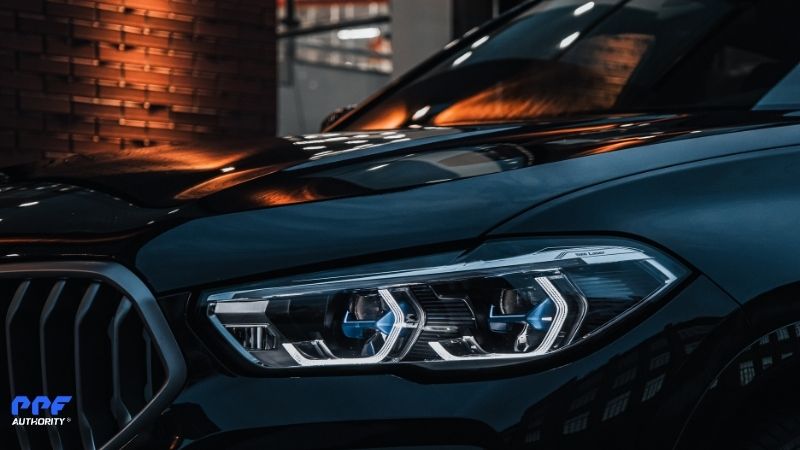Paint Protection Film (PPF) is one of the best ways to protect your car’s paint from rock chips, scratches, and environmental damage. However, like any protective product, PPF requires proper care to ensure it lasts as long as possible and continues to perform effectively.
In this article, we’ll provide practical tips for maintaining your PPF, discuss factors that affect its longevity, and explain how to keep it looking and functioning like new for years.
How Long Does PPF Last?
The longevity of PPF depends on several factors, including the quality of the film, installation, and maintenance.
Average Lifespan
- High-Quality PPF: Can last between 5 and 10 years or more with proper care.
- Standard PPF: Typically lasts around 5 years before signs of wear appear.
Factors Affecting Longevity
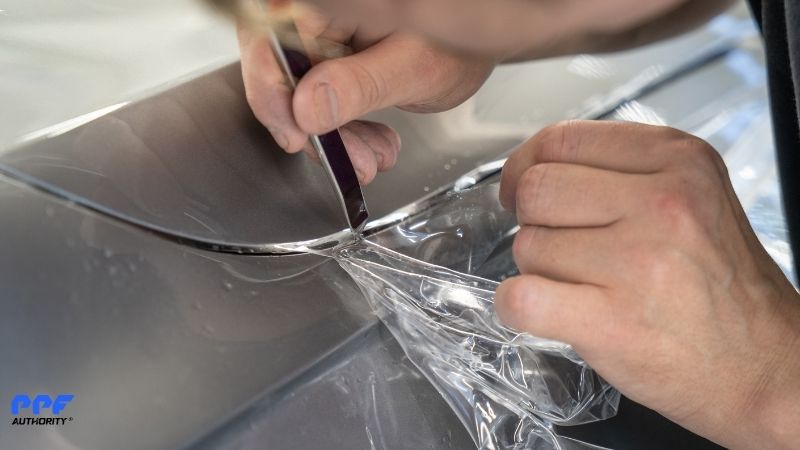
- Film Quality: Premium brands like XPEL, 3M, and SunTek offer advanced PPF with self-healing and hydrophobic properties, extending durability.
- Installation Quality: Professional installation ensures proper adhesion and edge-sealing, preventing premature lifting or peeling.
- Driving Conditions: Frequent exposure to rough roads, gravel, or harsh weather can shorten the film’s lifespan.
- Maintenance: Proper cleaning and care significantly impact how long the film lasts.
Essential Maintenance Tips for PPF Longevity
To maximize the life of your PPF, follow these maintenance tips:
1. Regular Washing
Dirt, grime, and road debris can accumulate on the film, leading to discoloration or reduced hydrophobic properties if not cleaned regularly.
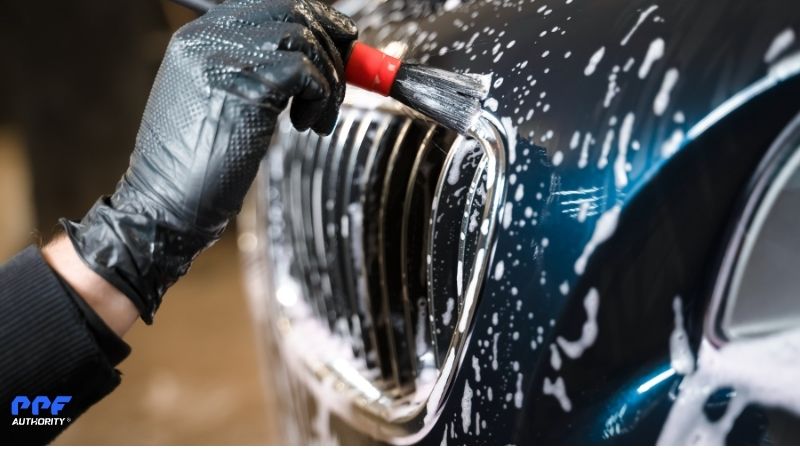
How to Wash PPF:
- Wash your car every 1-2 weeks to prevent buildup.
- Use a pH-neutral car shampoo to avoid damaging the film’s surface.
- Rinse thoroughly before washing to remove loose debris and prevent scratching.
- Follow the two-bucket method to minimize the risk of swirl marks.
2. Avoid Harsh Chemicals
Certain cleaners and products can degrade PPF or its topcoat, reducing its performance.
What to Avoid:
- Harsh detergents or degreasers.
- Solvents like acetone or alcohol unless recommended by your installer.
- Abrasive scrubbing tools like stiff brushes or rough sponges.
3. Protect Against Contaminants
PPF is resistant to many contaminants, but quick action can prevent stains or damage.
Tips for Removing Contaminants:
- Bird Droppings and Tree Sap: Clean these immediately with a microfiber towel and a PPF-safe cleaner.
- Bug Splatter: Use warm water and soap to gently remove bugs before they harden.
- Road Salt: During winter, rinse the car more frequently to prevent salt from accumulating on the film.
4. Dry Properly After Washing
Improper drying can lead to water spots and streaks on your PPF.
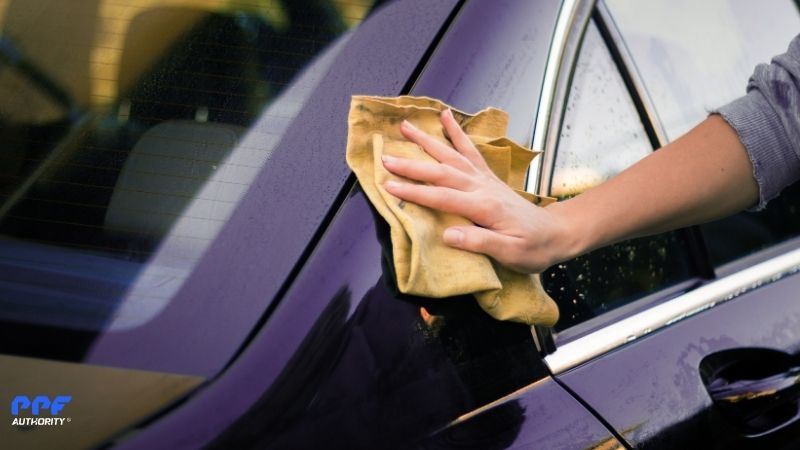
How to Dry:
- Use a clean, soft microfiber towel or a touchless air dryer to avoid scratching the film.
- Avoid drying in direct sunlight, as this can cause water spots.
5. Maintain Hydrophobic Properties
Many PPF products have a hydrophobic top layer that repels water, dirt, and grime. Over time, this layer can degrade, but it can be restored with proper care.
How to Restore Hydrophobic Properties:
- Apply a PPF-safe ceramic spray or sealant designed for urethane films.
- Avoid traditional waxes or sealants, as they can leave residues that reduce the film’s clarity.
6. Inspect and Repair Edges
PPF edges are prone to lifting if exposed to high-pressure washing or improper handling.
Tips for Edge Care:
- Avoid aiming pressure washers directly at the edges of the film.
- If you notice lifting edges, contact your installer for professional resealing.
7. Utilize Self-Healing Properties
Many modern PPFs feature self-healing technology that repairs minor scratches and swirl marks when exposed to heat.
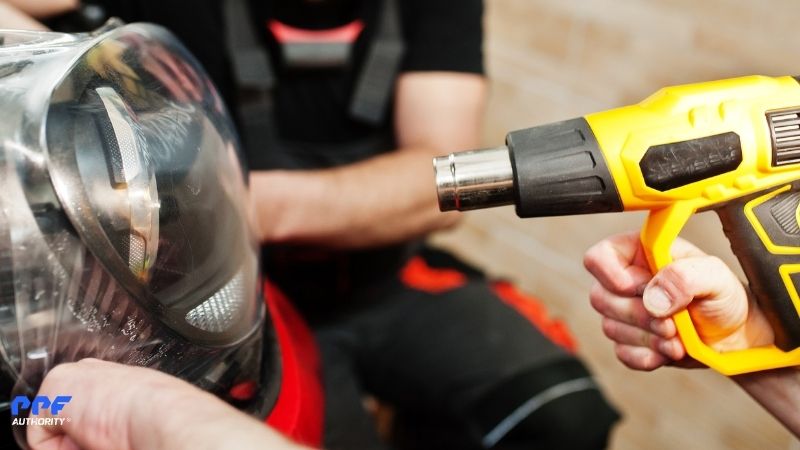
How to Activate Self-Healing:
- Park the car in direct sunlight to allow the heat to smooth out minor imperfections.
- For faster results, use a heat gun or a warm, damp cloth.
Seasonal Care for PPF
Different seasons pose unique challenges for maintaining your PPF.

Winter Care
- Wash your car more frequently to remove road salt and prevent it from accumulating.
- Avoid scraping ice or snow directly off the PPF with hard tools. Use a soft brush or cloth instead.
Summer Care
- Keep the car shaded or covered to prevent overheating, which can weaken the adhesive over time.
- Remove bug splatter promptly to avoid etching in the summer heat.
- Signs Your PPF Needs Attention or Replacement
- Despite proper care, PPF will eventually wear out. Watch for these signs:
- Discoloration or Yellowing: A sign of aging or exposure to contaminants.
- Peeling or Lifting Edges: Indicates improper adhesion or long-term wear.
- Scratches That Don’t Heal: For self-healing PPF, this suggests the film’s topcoat is deteriorating.
- Reduced Hydrophobic Properties: Water no longer beads or repels as it used to.
- If these issues persist, consult your installer to determine whether repairs or replacement are necessary.
How to Extend PPF Longevity
- Choose Professional Installation: A certified installer ensures the film is applied correctly, reducing the risk of lifting or bubbling.
- Use Recommended Products: Stick to PPF-safe cleaners, sealants, and tools to avoid damaging the film.
- Avoid Automatic Car Washes: High-pressure brushes can scratch or lift the film. Opt for hand washing instead.
- Park Smart: Whenever possible, park in shaded or covered areas to reduce exposure to UV rays and environmental contaminants.
When to Consider Replacement
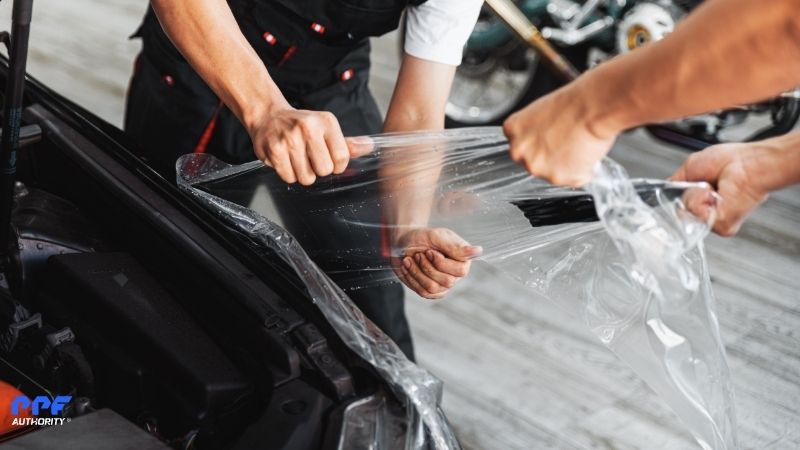
Even with proper maintenance, PPF doesn’t last forever. Consider replacing the film when:
- It has reached its expected lifespan (5-10 years).
- Visible damage compromises its appearance or protective properties.
- You’re preparing to sell the car and want it to look its best.
Conclusion
Proper care and maintenance are essential for maximizing the longevity and performance of your Paint Protection Film (PPF). By washing regularly, using the right products, and addressing contaminants promptly, you can keep your PPF looking and performing like new for years.
With the right approach, your PPF will continue to protect your car’s paint, preserve its value, and maintain its pristine appearance. For the best results, always follow the manufacturer’s guidelines and consult a professional installer for any concerns.

